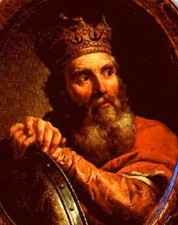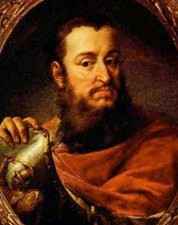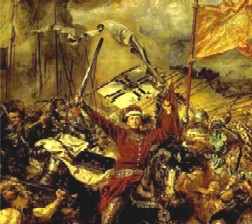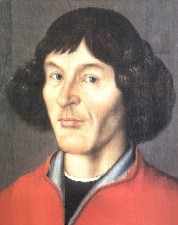Part 2
GREAT DAYS OF KRAKOW – 1364

Lokietek’s son, Casimir III, was born in 1310 and was the only Polish king distinguished as „Great”. His reign laid the foundation for future Polish grandeur. Casimir was a king of all the people, called „King of the Peasants” for his attempt to secure the authority of royal courts over aristocratic abuses and to codify Polish law. It is said that „he found Poland built of wood and left her built of stone.” His ambitious projects ringed the country with fortifications. He stimulated trade and welcomed Jews to Poland at a time when they were persecuted in virtually all other European countries. This is when the Jewish quarter of Krakow was founded and named Kazimierz to honor the king. On the diplomatic front, he concluded treaties with the Teutonic Order and Bohemia. Even though this meant abandoning Pomerania and Silesia, at least for a time, Casimir added large areas to the Polish Kingdom, pushing the country’s borders south-east. He re-founded the Ruthenian settlement named after Prince Lew, calling it by its modern name, Lwow.
The years 1363-1364, known as „The Great Days of Krakow,” saw the founding of Poland’s first university, called the Cracow Academy, and Casimir presiding over the marriage of his granddaughter to a future German Emperor. At this occasion kings and princes from all over Europe, including the Emperor himself, visited the city and discussed matters of international politics. The wedding banquet, recorded by French poet Guillaume de Marchaud, took place at the Market Square home of merchant Mikolaj Wierzynek. Today, visitors to Krakow can visit that same house and dine in one of Poland’s finest and, most likely, oldest restaurants. To Poland’s sorrow, Casimir died without producing a legitimate heir and his death effectively ended the Piast dynasty.
ADVENT OF JAGIELLONIAN DYNASTY
CROWNING OF WLADYSLAW JAGIELLO – 1386
The war over Casimir’s succession broke up even before his death in 1370. Finally, in exchange for a set of privileges, the warring parties agreed to crown his nephew, Louis the Hungarian of the d’Anjou dynasty. The privileges, known as Kosice Statutes, limited the obligations imposed on the Polish nobility.
Although Louis’ rule was brief, it had tremendous consequences for the subsequent character of the Polish state. The political power was given to the nobility at the time when in the west a reverse process was taking place. During his reign, Louis amassed one of the largest dynastic regimes of his time. Since at the time of his death, he left

only two young daughters as heirs, the war of succession erupted again. The younger daughter, Jadwiga, was finally proclaimed Queen of Poland in 1385, at the age of 11 years. A marriage with Jogaila, the Lithuanian ruler was proposed to cement an alliance with Poland’s powerful eastern neighbor. At the Union of Krewo in 1385, Jogaila agreed that in exchange for Jadwiga’s hand he would convert to Christianity, coordinate operations against the Teutonic Knights and associate Lithuania (which then included most of present day Belarus and Ukraine) with the kingdom of Poland in a permanent union. Jogaila, known as Jagiello, was crowned as King of Poland in February of 1386 at an assembly of Polish barons and nobility and adopted the name of Wladyslaw II.
For Jadwiga, the marriage came at the cost of personal happiness. She had been betrothed in infancy to a Hapsburg prince, with whom she was deeply in love, while Jagiello was much older and uncivilized. For reasons of state, however, she agreed to the marriage, and for personal satisfaction, she turned to a life of charitable works. During her reign, she gave all her jewelry and regalia to rescue the financially troubled Krakow Academy and, according to a legend, used a wooden gold-painted scepter for official functions. She died in 1399, at the age of 24. Soon after her death, Jadwiga was declared a saint. In 19th century, to honor its benefactor, tha Krakow Academy was renamed the Jagiellonian University.
WARS WITH TEUTONIC ORDER
BATTLE OF GRUNWALD – 1410
With the dynastic union of Poland and Lithuania assuming a more permanent nature, as well as the conversion of Lithuania to Christianity, the Teutonic Order was faced by a powerful new coalition. Nevertheless, the Order continued to command enormous resources and prestige. The situation continued to ferment until 1409, when an open conflict erupted.

On July 15, 1410 a decisive battle, one of the biggest in the history of Middle Ages, permanently weakened the Teutonic Order. The two opposing armies met outside the village of Grunwald (also known as Tannenberg). On one side were the Teutonic Knights, with Western European mercenaries, supported by infantry and cannon, about 27,000 men in total commanded by Grand Master Ulrich von Jungingen. On the other was a larger Polish-Lithuanian-Ruthenian army, supported by Czech and vassal Tartar contingents, of about 39,000 men, commanded by king Wladyslaw Jagiello himself.
The battle lasted for several hours. King Jagiello, unlike his opponent, did not lead the army to battle, but coordinated the efforts from the nearby hill. The Polish and Lithuanian forces were instead led by king’s brother Witold, Grand Duke of Lithuania. By the end of the day, eight thousand Teutonic Knights were slain, including the Grand Master of the Order, and fourteen thousand prisoners were taken for ransom. Despite this staggering defeat, the Teutonic Order showed an incredible resilience, falling back on the impregnable fortifications of the Marienburg (Malbork) in the north. Jagiello, lacking proper siege equipment, could not carry the war to complete victory. The First Treaty of Torun in 1411 actually restored the territorial status quo.
The situation remained unresolved until the Thirteen Years War of 1454-1466. Using professional mercenaries and new siege methods, the Poles and Lithuanians finally managed to humble the Teutonic Order. The area known as Royal Prussia (the land along the Vistula up to Gdansk) was incorporated into the kingdom of Poland. The land that eventually became East Prussia remained in the possession of the Order as a vassal state of Poland.
The Battle of Grunwald remains one of the most glorious days in Polish history. The period of struggle in the early 1400s was immortalized by Henryk Sienkiewicz in his historical novel „The Teutonic Knights.”
PRUSSIAN HOMAGE – 1525
The late 15th century and early 16th century marked the height of the Jagiellonian dynasty. Jagiellonian rulers for a time reigned simultaneously in Poland, Lithuania, Bohemia, and Hungary. Unfortunately, the Jagiellonians failed to elaborate a coherent political rationale for organizing the lands between Russia and Germany into a loose federation, in order to prevent their falling under the domain of one of these powers. The situation was even worsened by the tragic death of young king Wladyslaw III, Jagiello’s oldest son, during the siege of Varna.
At this time, Russia was locked in the autocratic grip of a series of ruthless tsars, driven by the single-minded ideology of the Third Rome. Perhaps the worst, was Ivan the Terrible, who embarked on an action of „gathering of the Russian lands.” His plan spelled doom for the sprawling Polish-Lithuanian-Ruthenian complex which lay in his path and down through the centuries, warfare between Russia and Poland-Lithuania continued with unrelenting brutality.

The situation along Poland’s northern borders normalized in 1466 following another defeat of the Teutonic Order by king Casimir IV the Jagiellonian in the Thirteen Years War . In the outcome, the Eastern Pomerania with the city of Gdansk were returned to Poland. In 1525, Albrecht Hohenzollern, the last Grand Master of the Teutonic Order, converted to Lutheranism and established a secular duchy in East Prussia. He journeyed to Cracow to pay homage to the Polish King, Zygmunt I Stary (the Old), and to swear to the eternal association of his duchy with Poland. This moment, which many have seen as the zenith of Polish power, is immortalized in the famous painting by Jan Matejko.
In 1526, King Louis II Jagiello of Hungary and Bohemia died in the ferocious Battle of Mohacs, where virtually all of the Hungarian nobility perished facing another Ottoman Turkish invasion. In a turning point of European politics, these lands, and the responsibility for their defense, devolved to the Austrian Hapsburgs. However, Poles and Hungarians continued to share a national friendship, a rare occurrence in conflict-torn Eastern Europe.
COPERNICUS’ DE REVOLUTIONIBUS ORBIUM COELESTIUM – 1543

Nicholaus Copernicus (1473-1543) was probably the greatest Polish scientific mind in history, and a person whose ideas permanently changed the way people view the earth and its relation to the rest of the universe. Although he received a degree in Canon Law and worked as a canon in the Olsztyn Bishopric, he is best known for his findings in the field of astronomy. His main work, „On the Motions of Heavenly Spheres” („De Revolutionibus Orbium Coelestium”), which he dared to commit to the new medium of print only when nearing his death, carefully argued for the then-revolutionary thesis that the Earth revolves around the Sun, rather than the reverse. The effects of the Copernican Revolution in science have lasted to this day. A famous verse about Copernicus states: „he stopped the Sun, and moved the Earth, the Polish nation gave him birth.” Copernicus was the most illustrious among a whole host of great figures of the Polish Renaissance that included poet Jan Kochanowski (1530-1584), and Chancellor Jan Zamoyski (1542-1605). Zamoyski, the leading politician of his day, reconstructed his native Zamosc as the model city of the age and still a leading example of prime Renaissance architecture. He established a famous Academy, called Hippeum, which briefly constituted one of the foremost seats of learning in Eastern Europe.
The Polish Renaissance reinforced the distinctive secular Latinate streak in Polish cultural heritage, focusing on humanistic learning, a reverence for Antiquity, a belief in individualism, and an interest in public affairs. This was truly the cultural and political zenith of old Poland but, alas, shadows darkened the horizon and the spirit of rebirth that brightened this period was destined not to last.
Super Gaminator Dolphins Pearl należy do żelaznej klasyki hazardu internetowego. Gra ta powstała kilkanaście lat temu w zaciszu austriackiego studia Novomatic. Dziś gry hazardowe online oferowane przez tego producenta znajdziemy w najlepszych kasynach na pieniądze oferujących swoje usługi graczom z Polski. Najlepsze Gaminatory na pieniądze do dzisiaj przyciągają miłosników rozrywki hazardowej na całym świecie. Powodów takiego stanu rzeczy jest wiele. Przede wszystkim gry tego typu nie są zbyt skomplikowane i mogą być obsługiwane nawet przez mniej doświadczonych graczy. Klasyczna gra tego typu posiada kilka linii wypłat (maksymalnie 10), jeden albo dwa symbole specjalne (choć często nie posiada żadnych). Wiele z nich dysponuje jedynie trzema bębnami, choć w większości znajdziemy ich pięć. Jeśli spodobał wam się slot Dolphins Pearl, koniecznie sprawdźcie podobną grę rozgrywającą się w podmorskich głębinach, a mianowicie darmowy automat Lord of the Ocean. Wszytkie Gaminatory działają bez konieczności pobierania na dysk zarówno na komputerach jak i telefonach.